All products featured are independently chosen by us. However, SoundGuys may receive a commission on orders placed through its retail links. See our ethics statement.
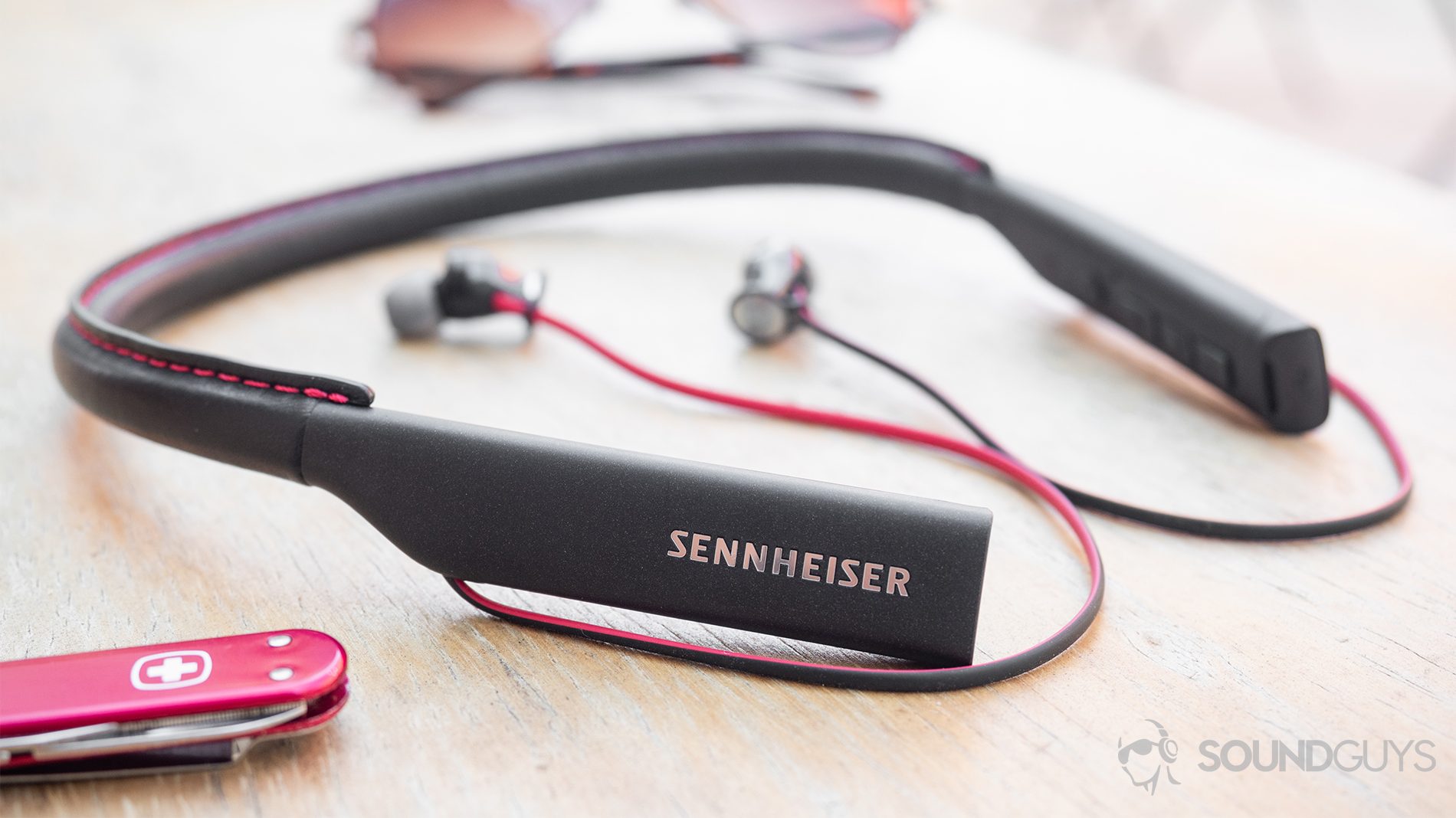
Sennheiser HD1 In-Ear review
Published onFebruary 18, 2021
Sennheiser Momentum HD1 In-Ear Wireless
We’ve been seeing plenty of true wireless earbuds lately. Yeah, that technology is neat and convenient, but it isn’t always the most reliable wireless option. In fact, it’s hardly ever the most reliable wireless option, at least as of now. But the Sennheiser HD1 In-Ear Wireless are a pair of comfortable neckband-style earbuds that are aptX and AAC-compatible and ready to accompany you anywhere.
Editor’s note: this Sennheiser HD1 In-Ear review was updated on February 18, 2021, to include a contents menu and expand the list of buying options.
Who is the Sennheiser HD1 In-Ear for?

- Fashionable listeners will appreciate the fine build quality of the Sennheiser Momentum HD1 earbuds. Meticulous red stitching contrasts the otherwise all-black design of these buds.
- General consumers should consider these once-expensive earphones. Sure, they may be a few years old, but they still have all the comforts of a premium headset like high-quality Bluetooth codec support and easy-to-operate button controls.
What’s it like to use the Sennheiser HD1 In-Ear?
The first thing you notice about these earbuds is the gorgeous, soft sheepskin nappa leather and stitching across the flexible neckband. The red threading and cable accents provide a bit of flair without compromising the chic design of the HD1 earbuds. On the left wing of the neckband, are playback controls, a power button, and omnidirectional microphone.
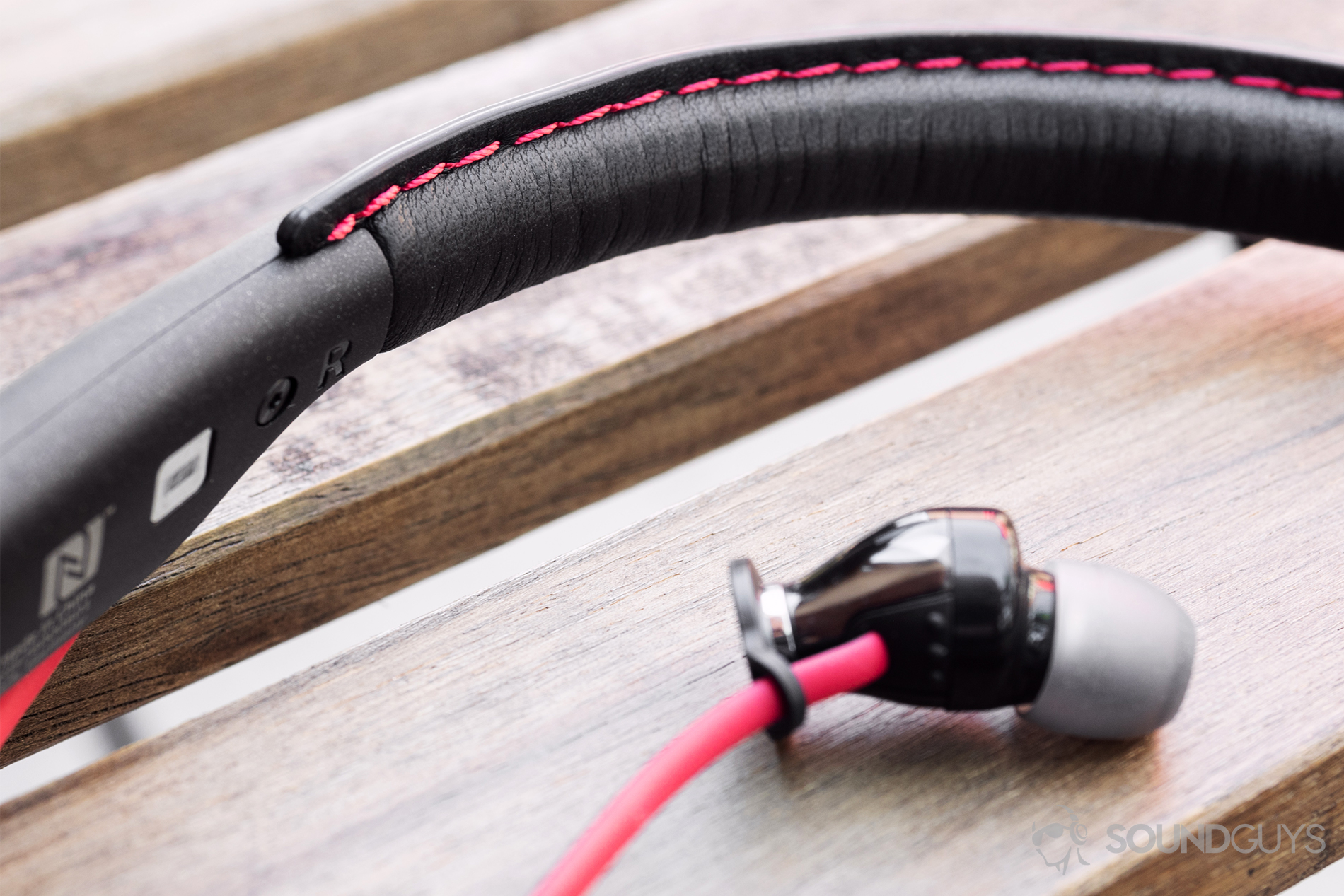
Each stainless steel earbud rocks a mirrored chrome finish, and they’re complemented by the impact-resistant polycarbonate elements. Though the earbuds look and feel great, it would have been a more convenient feature to add some kind of magnetic or retractable functionality. Due to the somewhat fragile materials and lack of IP rating for these earbuds, you should use caution when working out in them. It’s do-able, but perspiration will quickly erode away at the leather. Not to mention that a bit of moisture and bad luck can lead to short circuiting.
The on-board, omnidirectional microphone sounds all right. Although, it doesn’t hold a candle to the best headphones for conference calls, the mic is perfectly fine for everyday use and even some professional calls. When you purchase the Sennheiser HD1 In-Ear Wireless earbuds, you get a molded, zipper carrying case; a micro-USB charging cable; and three pairs of ear tips.
How to use the onboard controls
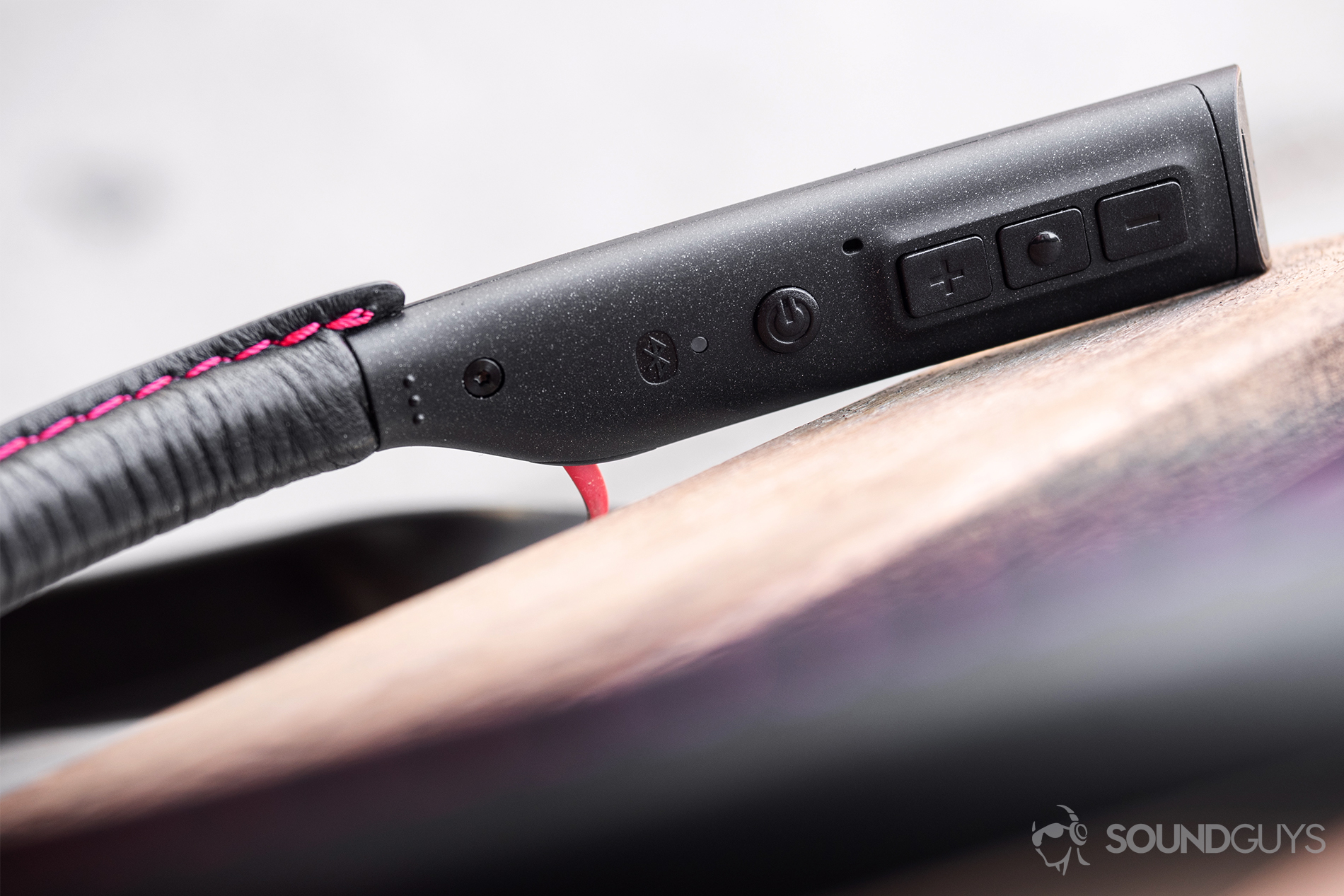
On the left interior of the neckband, there are three buttons for playback control, and the center button can be used to access virtual assistants like Google Assistant and Siri. Since they’re separate buttons that have about 1mm of separation between each one, it’s easy to differentiate between all of them. This was useful when biking around town; I never fumbled around to pause or skip a track. Speaking of which, track control is a little odd in that it requires holding the volume up or down button, not double-tapping the center button. Just something to note.
How is the battery life?
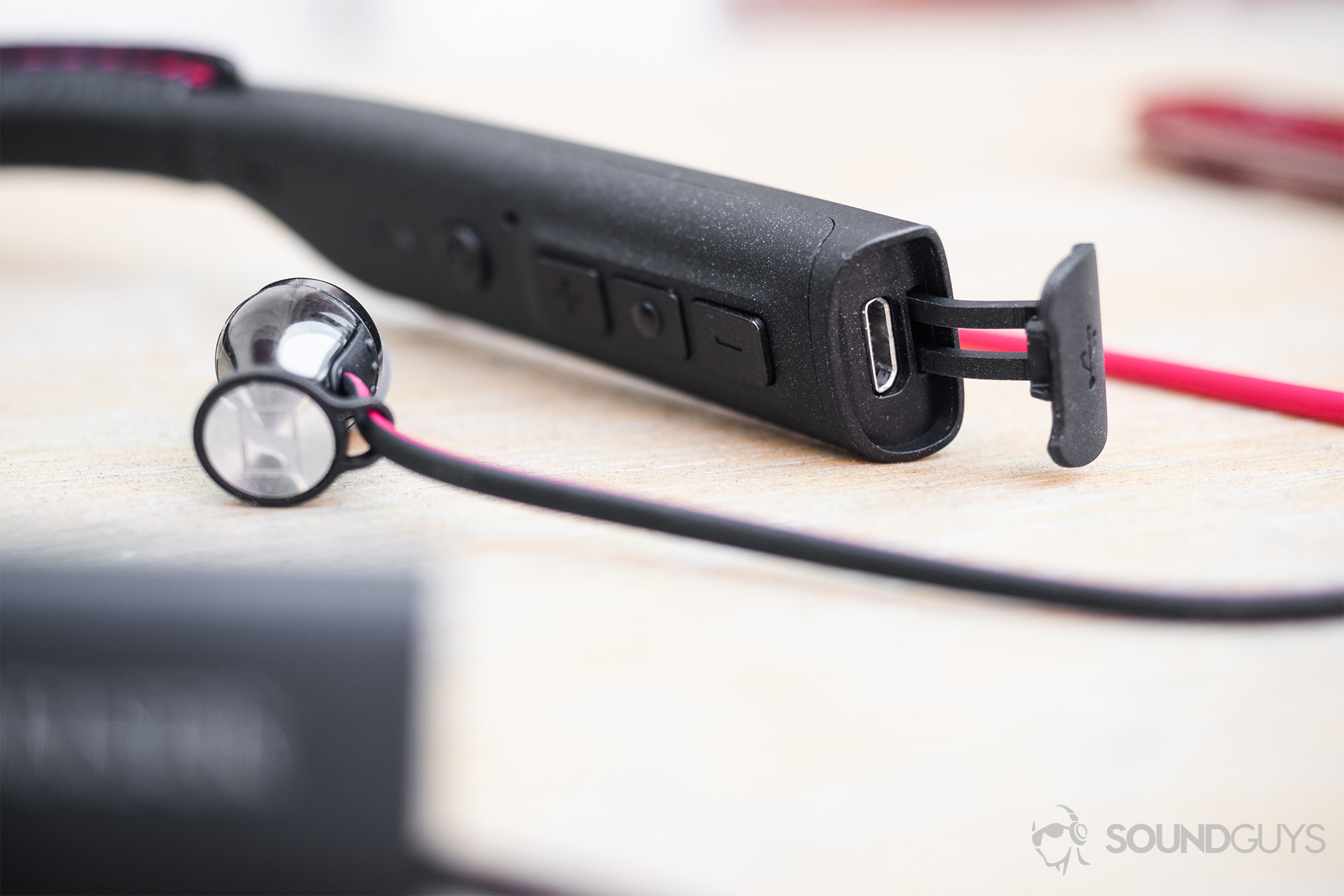
It only takes 1.5 hours to go from zero to 100 percent, but Sennheiser reports a battery life of 10 hours, which isn’t great for a pair of neckband-style earbuds. Although 10 hours isn’t groundbreaking, it’s worth giving the Sennheiser HD1 In-Ear Wireless ‘buds props for having a battery life of 10.13 hours with a constant 75dB output. Though it won’t damage your hearing, 75dB is fairly loud. Most of us won’t listen to our music at such volumes; in which case, you may squeeze out 10.5 or even 11 hours of playback.
Does the Sennheiser HD1 In-Ear stay connected?
These Bluetooth 4.1 earphones support AAC and aptX for high-quality streaming from any device. As with most modern devices, connecting is quick and easy. You can either enter pairing mode by holding the power button for three seconds, or just tap your NFC-enabled device to the logo on the left wing of the neckband to bypass your phone’s Bluetooth menu. Once connected, you have a 10-meter radius before things start to get crackly.
Learn more: Bluetooth codecs 101
What’s more, Sennheiser doesn’t explicitly state this on the box, but the headphones support Bluetooth multipoint. This means you can connect to two devices simultaneously.
Does the Sennheiser HD1 In-Ear have lag issues?
Since these are aptX and AAC-compatible, there’s virtually no perceptible audio-visual lag. When I was binge watching Nathan For You, I didn’t experience any awkward delay. Another perk of these Bluetooth codecs is their ability to stream higher quality audio from the source device to the headphones. In the case of aptX, this relays CD-like audio straight to your ears, which is more than good enough for most of us.
How do the Sennheiser HD1 In-Ear Wireless sound?
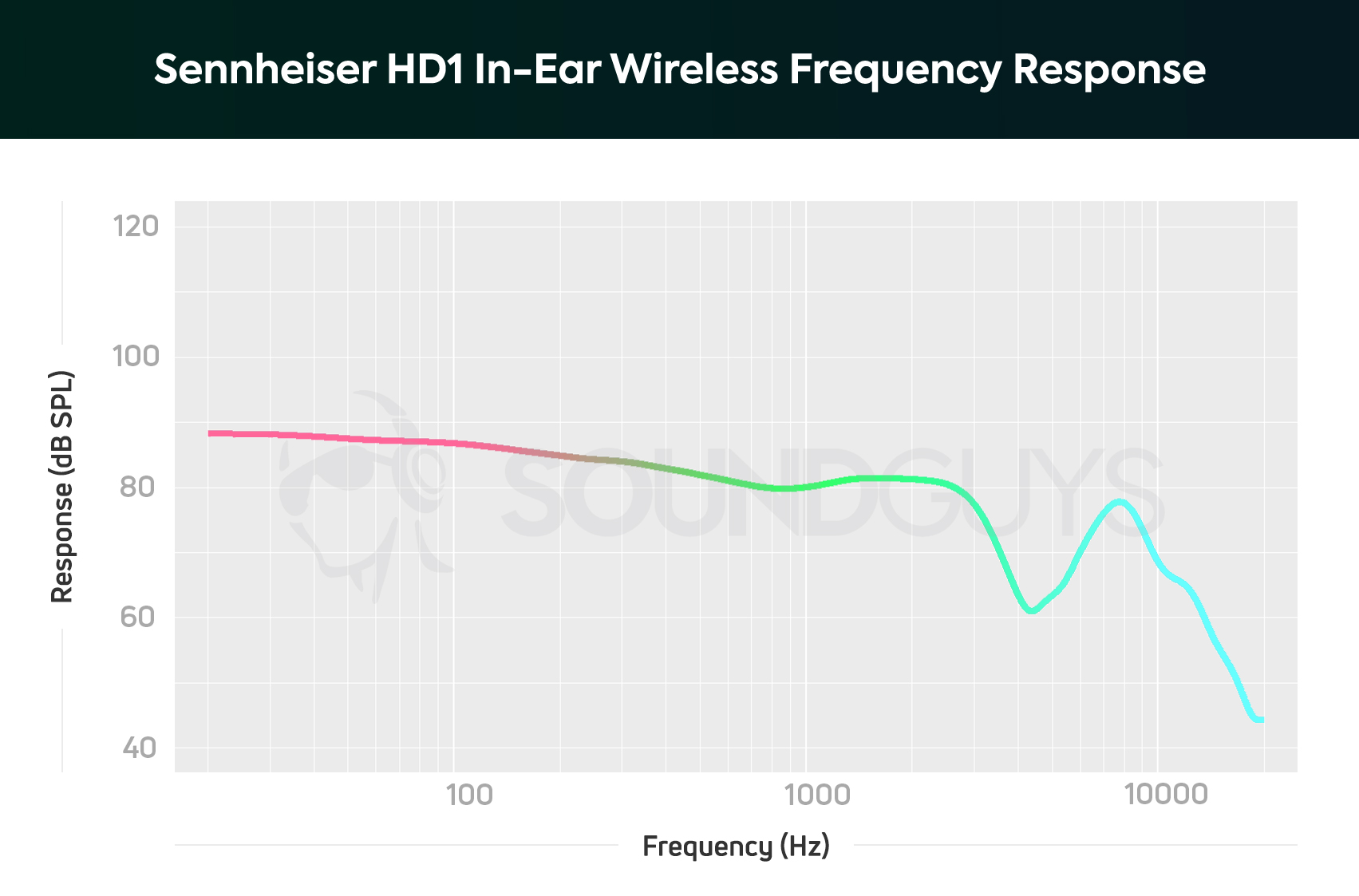
Like the MOMENTUM True Wireless line, these earbuds amplify low-end frequencies. This is typical of consumer headsets as we’re accustomed to hearing exaggerated bass notes. The 3-6kHz dip is nothing to worry about; instead, it’s actually a feature of the sound signature because this is where unwanted resonances fall within the human ear canal.
Related: Best Sennheiser headphones
Isolation performance is good, and we measured an average isolation of 11.69dB SPL. These earbuds do a decent job negating noise between 100Hz and up like that buzzing refrigerator that you need to fix, or the chortling baritone taking up too much counter space at the coffee bar. In all fairness, effective isolation is highly dependent upon a proper fit and seal. If the included ear tips aren’t a good fit, we highly recommend investing a few extra bucks into Comply memory foam ear tips.
Lows, mids, highs
In Good As Hell by Lizzo, the kick drum that enters (0:12) is noticeably louder than high notes, and some masking comes into play. Even still, Lizzo’s vocals remain audible above the kick drum and A-G-Fm piano chord pattern.
Simple by Florida Georgia Line is a fine case study for the earbuds’ midrange reproduction. The basic Am-C-F-C-F-G chord progression is difficult to hear over the instrumental chorus, and Brian Kelley and Tyler Hubbard’s harmonies become unclear in the din.
Related: Best studio headphones
Cory Wong rocks out in Jax, an instrumental-only groovy ballad that’s predominated by the electric guitar and accompanied by a variety of instruments including the drums, piano, trumpet, electric and bass guitars, and a synthesizer. The bass guitar and drums sound fantastic through the HD1 wireless earbuds, but the higher frequencies of the synthesizer fall short.
That said, the highs fare better than the frequency response graph would lead you to believe. The trumpet harmonics, which oscillate between 1-9kHz, sound much more prominent than I was expecting, interestingly, the reverberations of the electric guitar weren’t as emphasized with these as they are with my personal pair of RHA MA750i earbuds.
Should you buy the Sennheiser HD1 In-Ear?
Even in 2021,the Sennheiser Momentum HD1 In-Ear Wireless earbuds remain a great buy for listeners who don’t care for USB-C charging or the latest Bluetooth firmware.
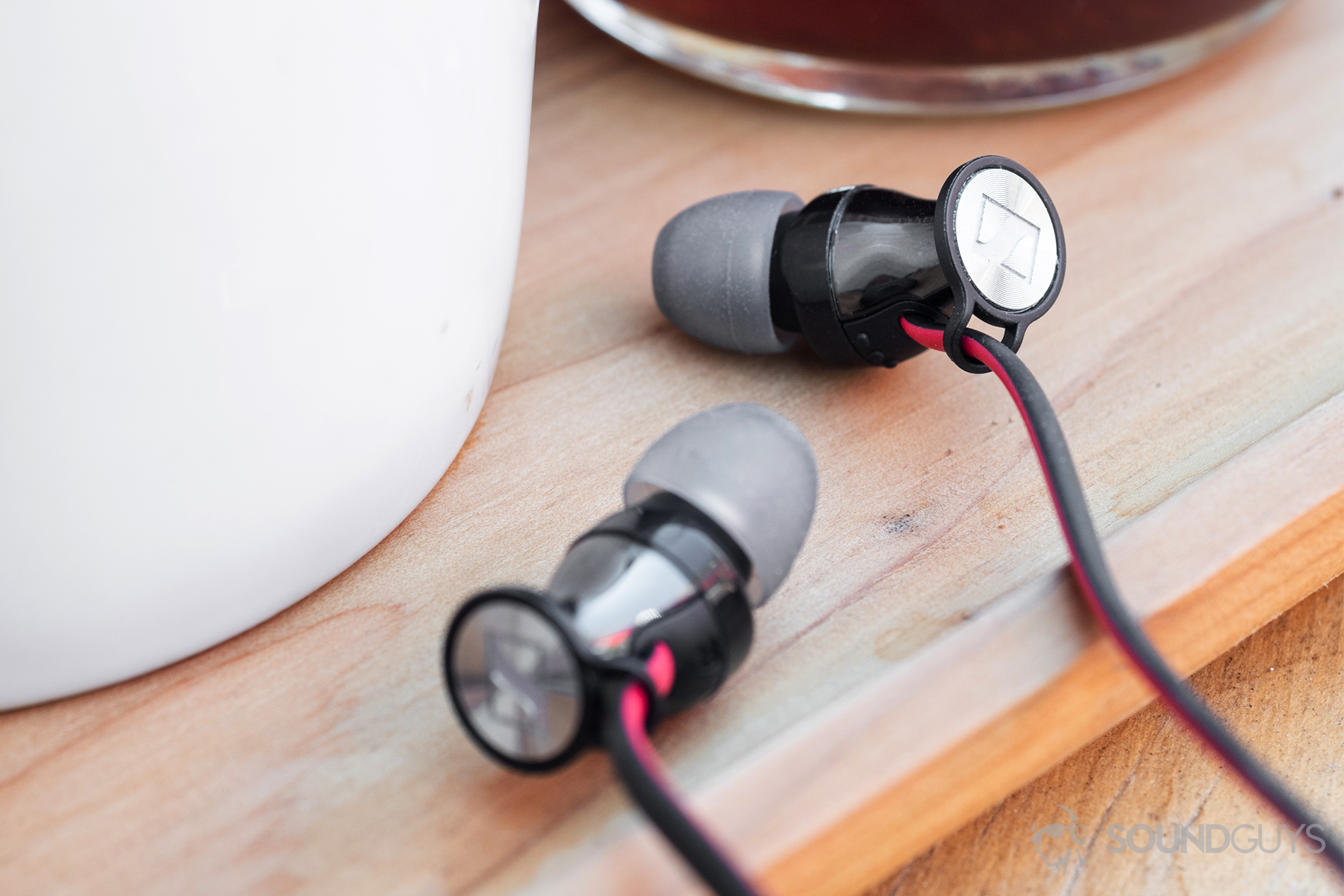
Sure, some may rather have water and dust protection instead of leather materials but if that’s the case, then there are plenty of other options available to you. However, Sennheiser gets comfort, fit, and connectivity spot-on with these wireless earbuds. Yes, sound quality reproduction could be clearer, but it’s easy to overlook and the forward low-end and vocals will please most consumers’ ears. Even though these don’t provide you with the most accurate sound, they’re fun to listen to and sometimes that’s all you want.

Editor’s note: the Sennheiser HD1 In-Ear Wireless is officially discontinued, but it’s still a great option if you can find it renewed.
Consider the LG TONE Style SL5 instead
If you’re on the fence about the Sennheiser HD1 In-Ear Wireless, the LG TONE Style SL5 is a sleek, modest alternative that costs less.
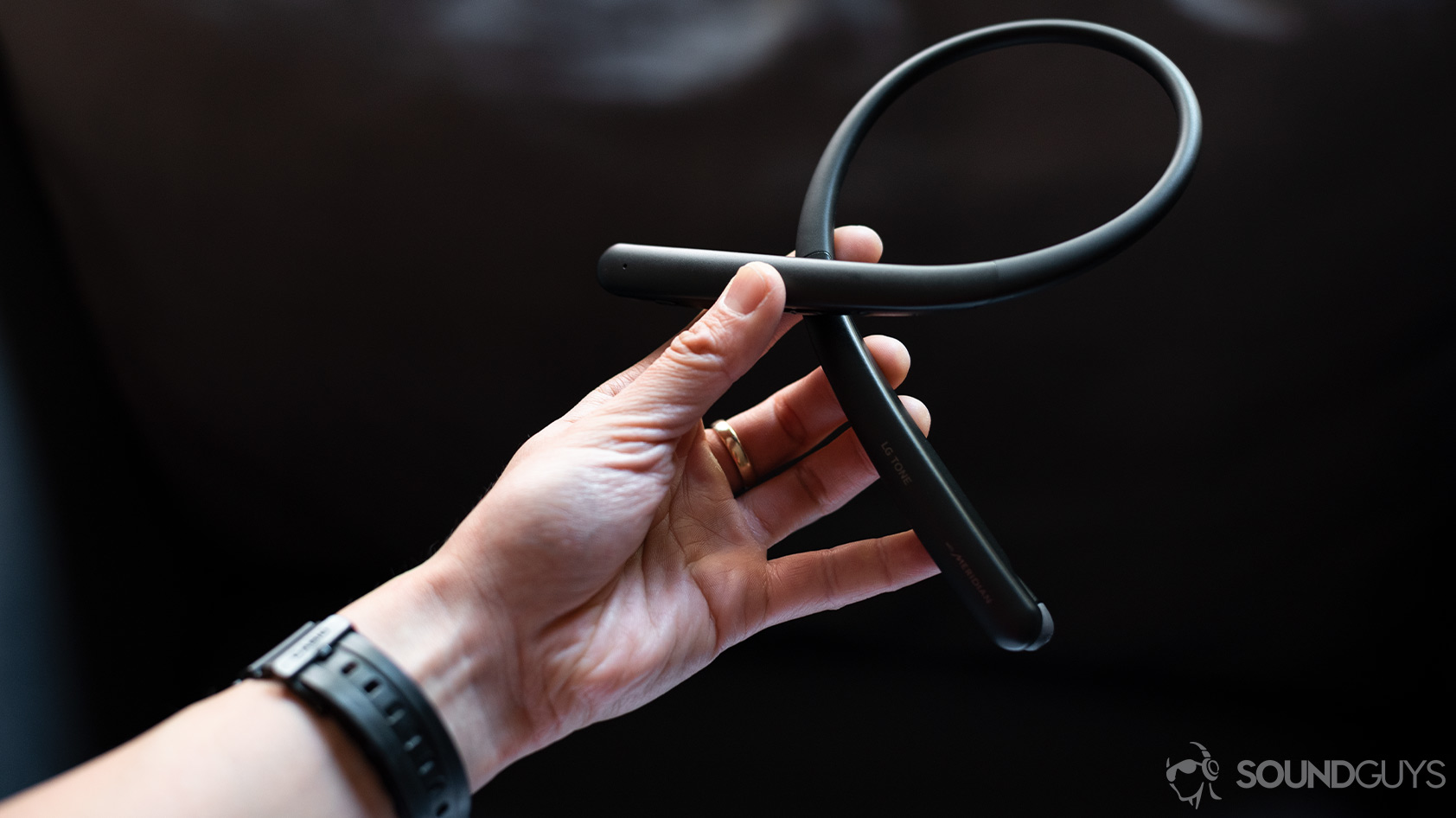
The LG TONE Style SL5 is a great neckband headset that uses Bluetooth 5.0 firmware, supports quick charging, and is tuned by Meridian Audio. It’s half the cost of the Sennheiser HD1 In-Ear Momentum, and is even more compact. Microphone quality is perfectly fine for personal calls, and can get you by in a pinch during conference calls. If you just want something wireless that works, get the SL5.